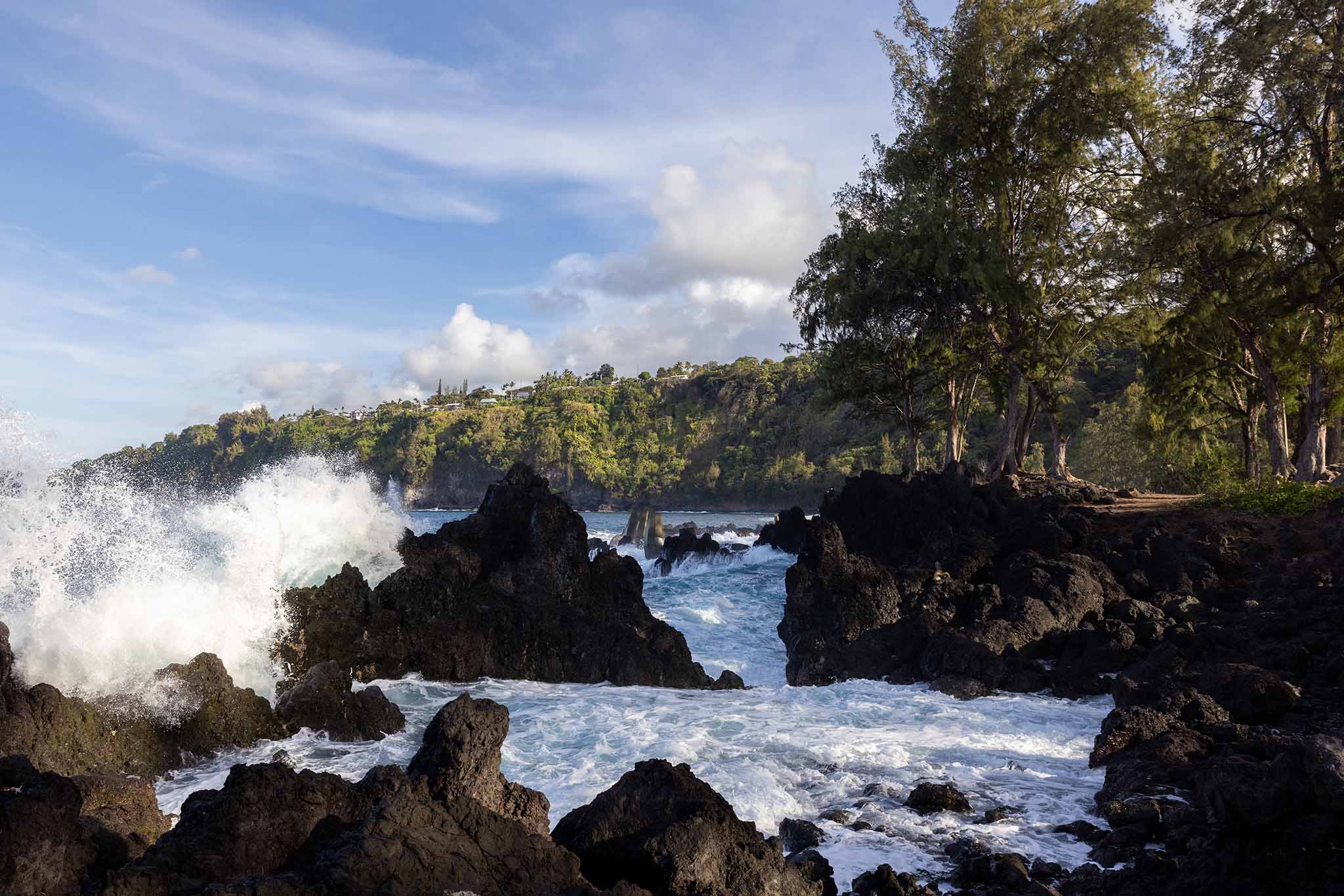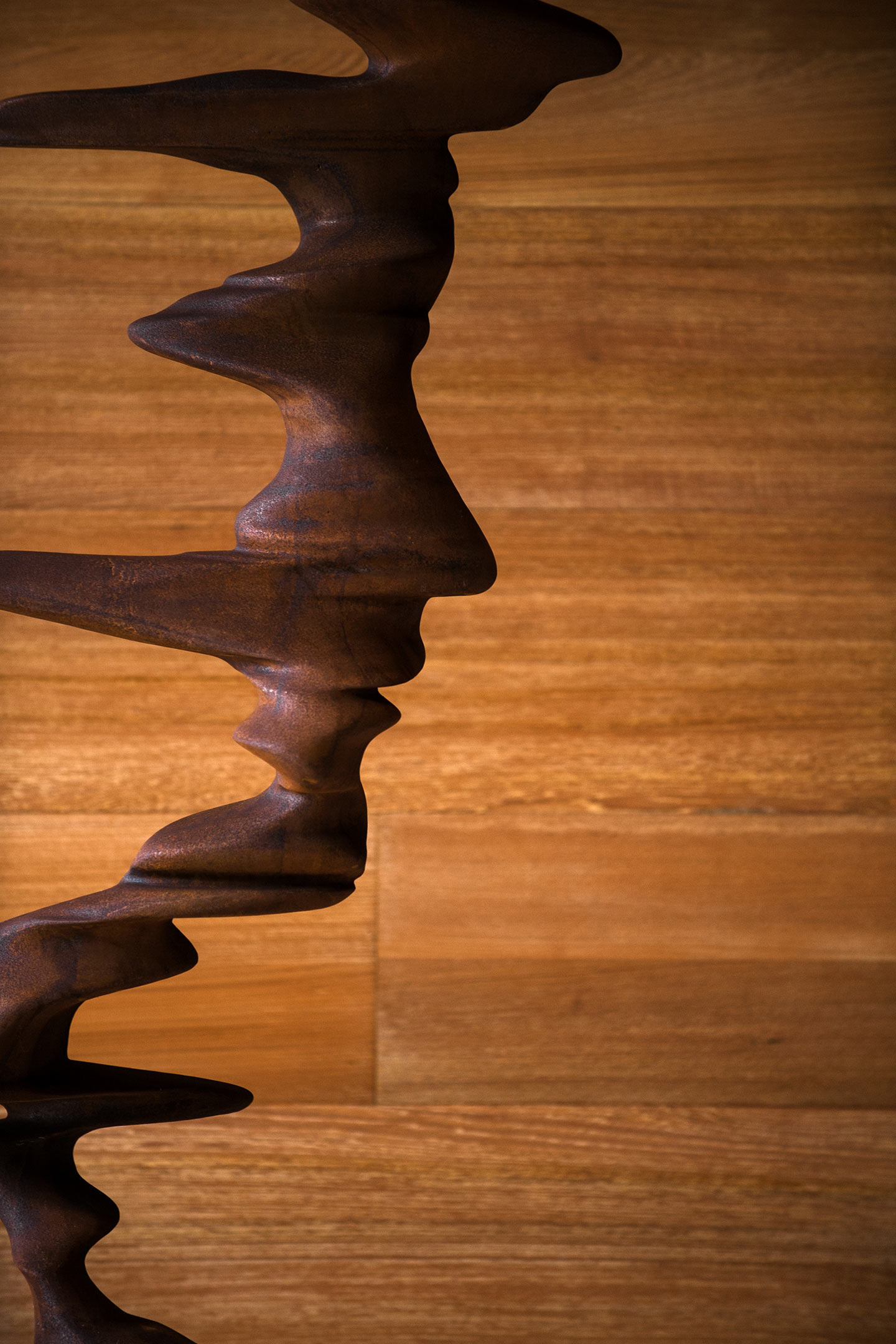Text by Eunica Escalante
Images by Anna Pacheco
Driving through the Hāmākua Coast, the phrase “old Hawai‘i” tends to float to the front of one’s mind. There is an archetypal romance in the ever-present ocean along the horizon, the former sugar towns’ scatter of plantation-style houses, the way that the vegetation seems to grow with a restless energy. It is possible to visit Hāmākua and only see this rote rendering—the bucolic roadside fruit stands and the Instagram-ready vistas. But if that is all you take in, then you have not seen Hāmākua at all.

The coast begins where the road curves north of Hilo and ends just beyond the last of the sugar towns, where the cliffs give way to the rolling cattle pastures of Waimea. It is a place best understood in motion, seen from the contours of Hawai‘i Belt Road as it threads along the eastern hem of Hawai‘i Island. The Pacific here is not the lapis blue of a postcard but a kind of mutable slate, burnished silver in the rising dawn and blackened by afternoon squalls. Visitors are often surprised that it rains here. In their minds, Hawai‘i is a place of perennial sunshine. Yet, in Hilo and upward along the coast, it is as much a part of the landscape as the gulches and waterfalls and steep cliffs overlooking the Pacific. “‘Ele‘ele Hilo, panopano i ka ua—Hilo is black, dark with rain,” goes one ‘ōlelo no‘eau, or Hawaiian proverb. Here, rains are etched into the collective memory, their testament in the landscape. In thickets of strawberry guava and parasol trees that crowd the road’s shoulder. The monstera leaves that grow wider every season. The houses, with their spacious lānai and peeling, pastel-hued exteriors, sinking deeper into the green.

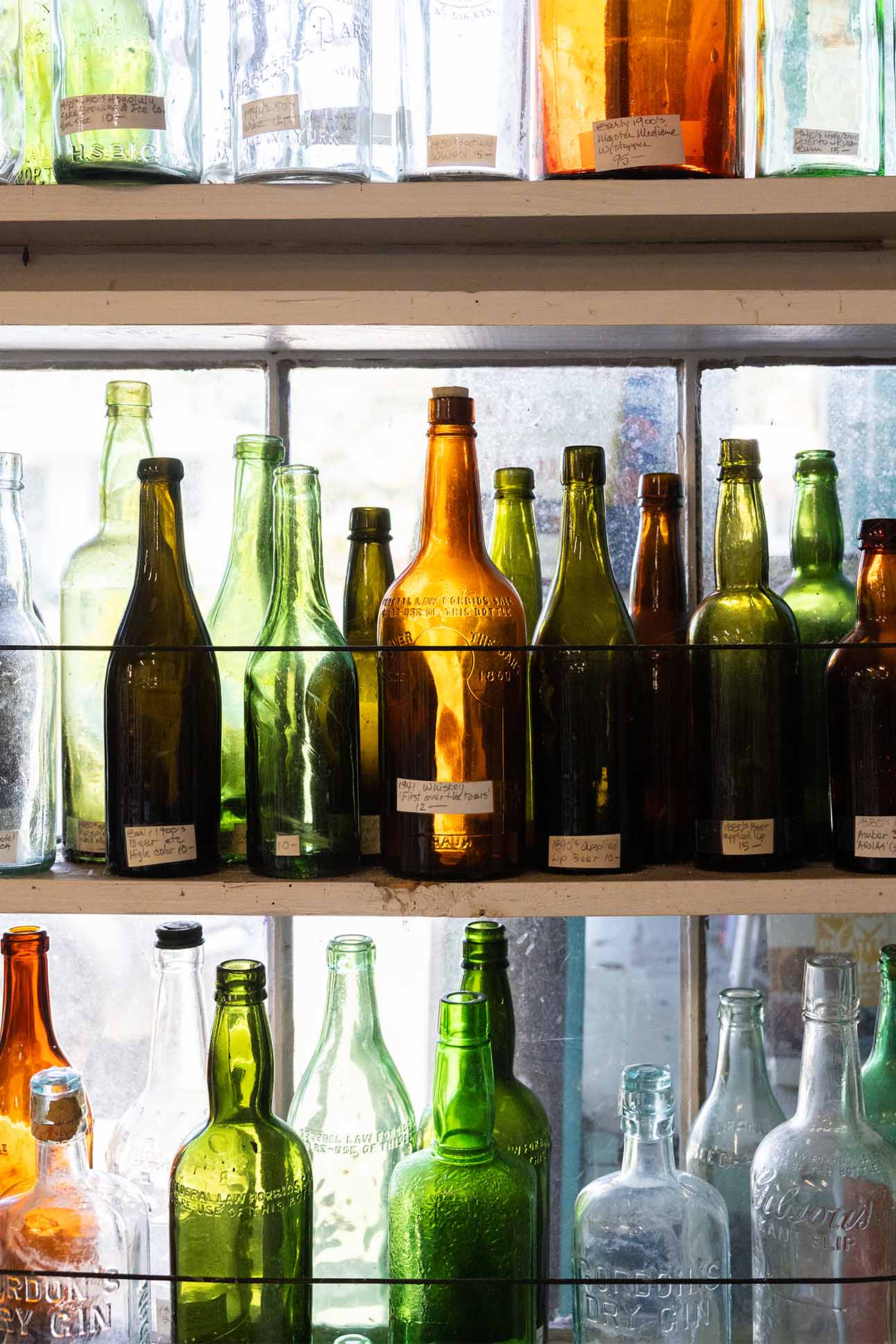
These rains served the titans of industry well, particularly the sugar barons who came here in the late 1800s to turn land into profit. For nearly a century, Hāmākua was sugar country. Swaying stalks of cane dominated the landscape. Tens of thousands of migrants arrived to the islands over the decades in boatloads from Japan, China, and the Philippines, drawn by promises of a new life. Instead, they disembarked as indentured laborers, bound to harsh contracts enforced by a legal system that proved nearly impossible to navigate across linguistic and cultural barriers. Many found themselves in Hāmākua’s sugar fields. The work was long, and the hours longer still. The wages, never enough. Housing was company property, stores were company stores, and the lines between labor and life blurred until it was impossible to tell where one ended and the other began. Still, they came, drawn by a dream shaped as much by hope as necessity.
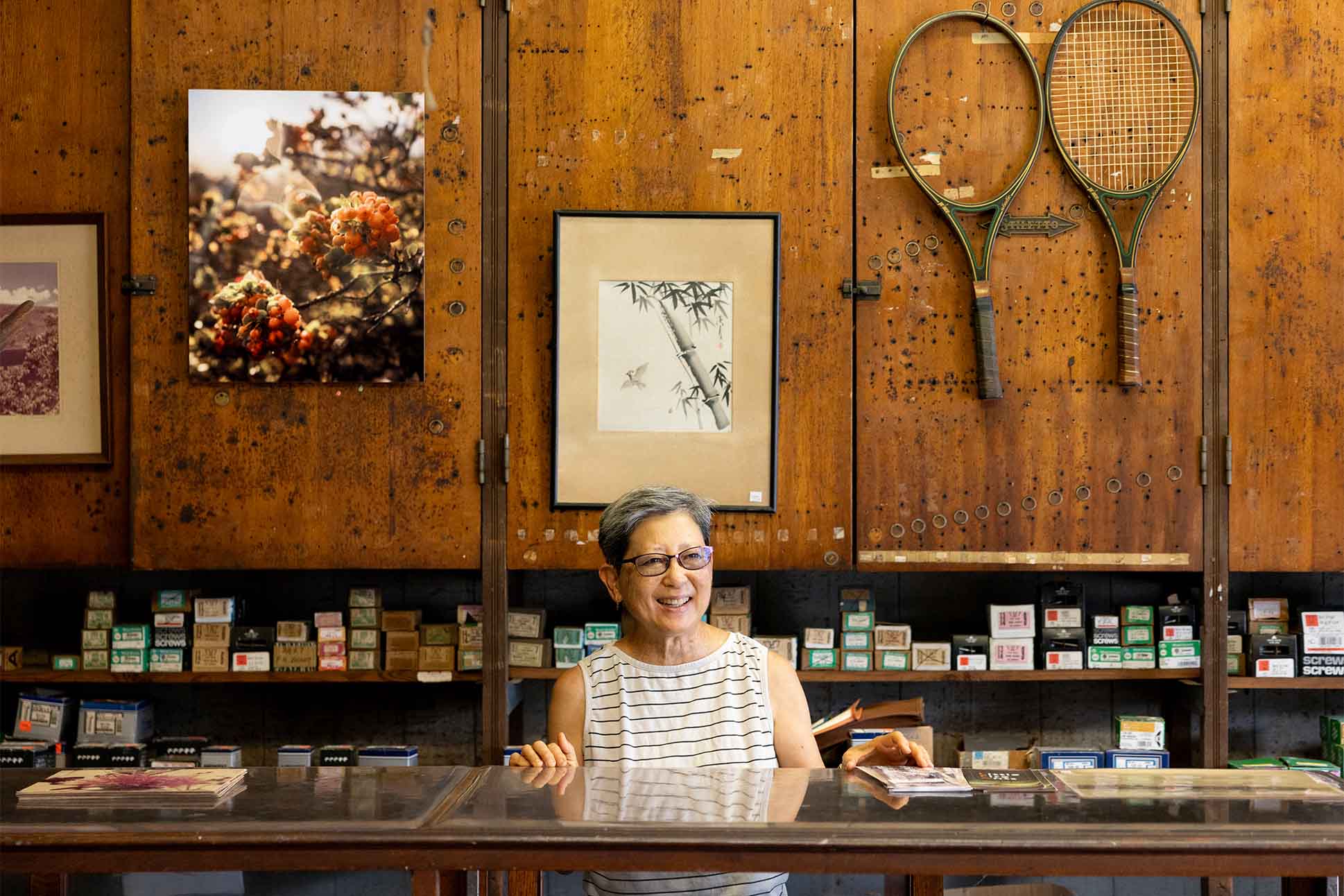
The old sugar plantations are gone now; Hāmākua Sugar Company, the last on the island, shuttered in 1994. In their place are pasturelands, coffee fields, and macadamia groves. Yet, the old town names remain: Pa‘auilo, Laupāhoehoe, Honomū. Other things remain, too. At ‘Onomea Bay, concrete posts jut out from the shoreline, remnants of sugar derricks that sent sugarcane down to the ships anchored offshore. At Hakalau Beach Park stand the walls of an old mill, graffitied and veiled under a tangle of vines. In Honoka‘a, near the center of town, a simple memorial of wooden posts are crowned by a Japanese tiled roof. Inscribed on the plaque is a newspaper excerpt from 1889: “A Japanese storekeeper, K. Goto, was found dead this morning at 6 o’clock, hanging to a cross arm on a telephone pole about 100 yards from Honoka‘a jail.” Katsu Goto was 28 when four men lynched him. It was retaliation, supposedly, for a nearby canefire the night before. More likely, it was to prevent him from making more labor demands on behalf of plantation workers. It would be some decades before the unions made any real progress in Hāmākua. Yet, even as signs of the plantations wear away each year, Goto’s memory continues to stand along Mamake Street. The past does not rest quietly in Hāmakua. It presses itself against the present, like the kudzu that grows over the abandoned cars on the roadside.
Here’s where the disequilibrium of the Hāmākua Coast sets in. It feels eternal, yet it is continually changing, more so in recent decades as tourism creeps along its edges. The main street of historic Honoka‘a Town, once an avenue of stores that sold provisions for working-class locals, is lined now with antique shops of overpriced Hawaiiana souvenirs. The century-old hardware store, B. Ikeuchi & Sons, has shuttered its doors and sold the last of its inventory. On the road to Akaka Falls, there are signs advertising bicycle rentals and a zipline over Umaumau Falls. Along a bluff overlooking ‘Onomea Bay, a former bed-and-breakfast is now a four-star luxury hotel, Hāmākua’s first.
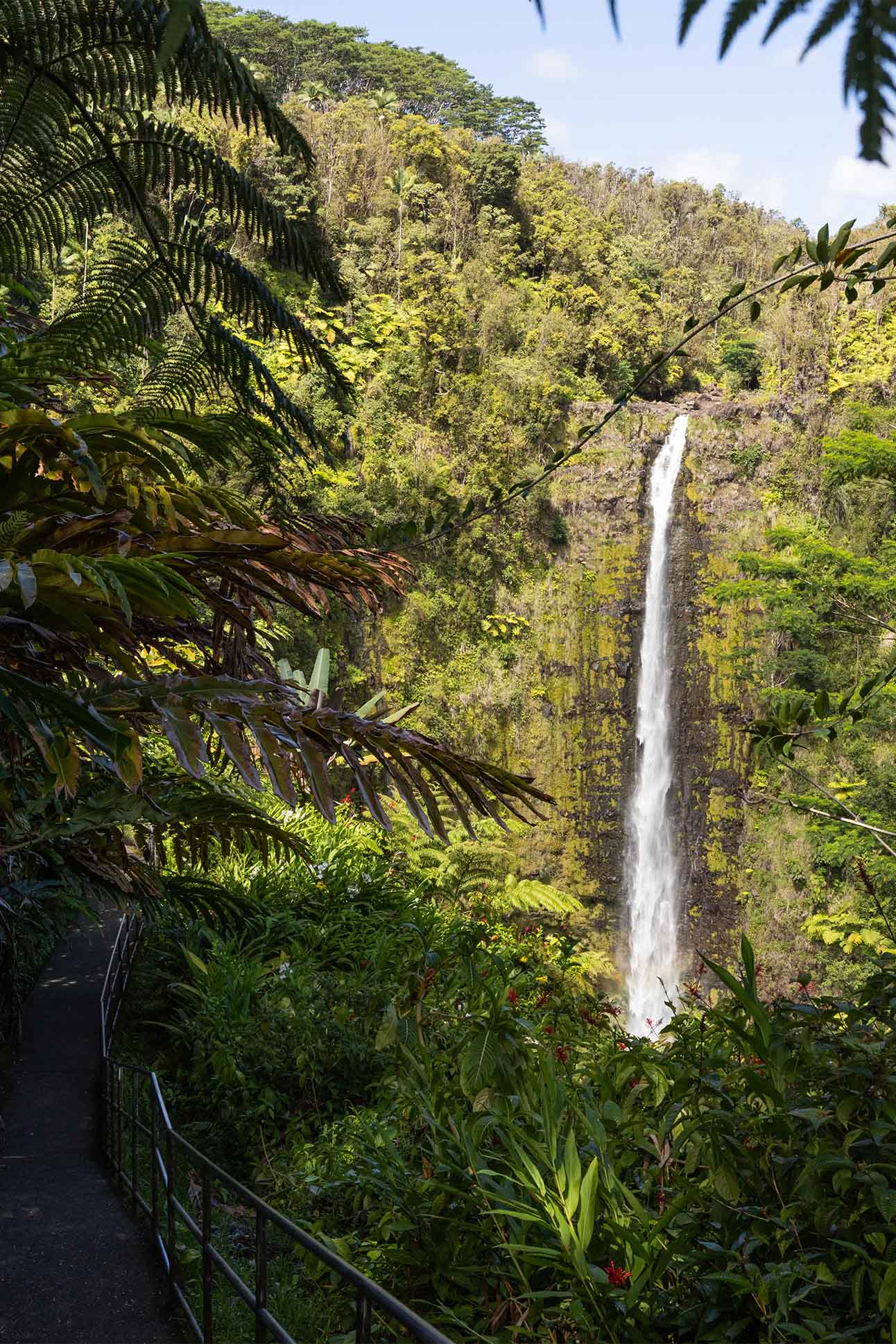
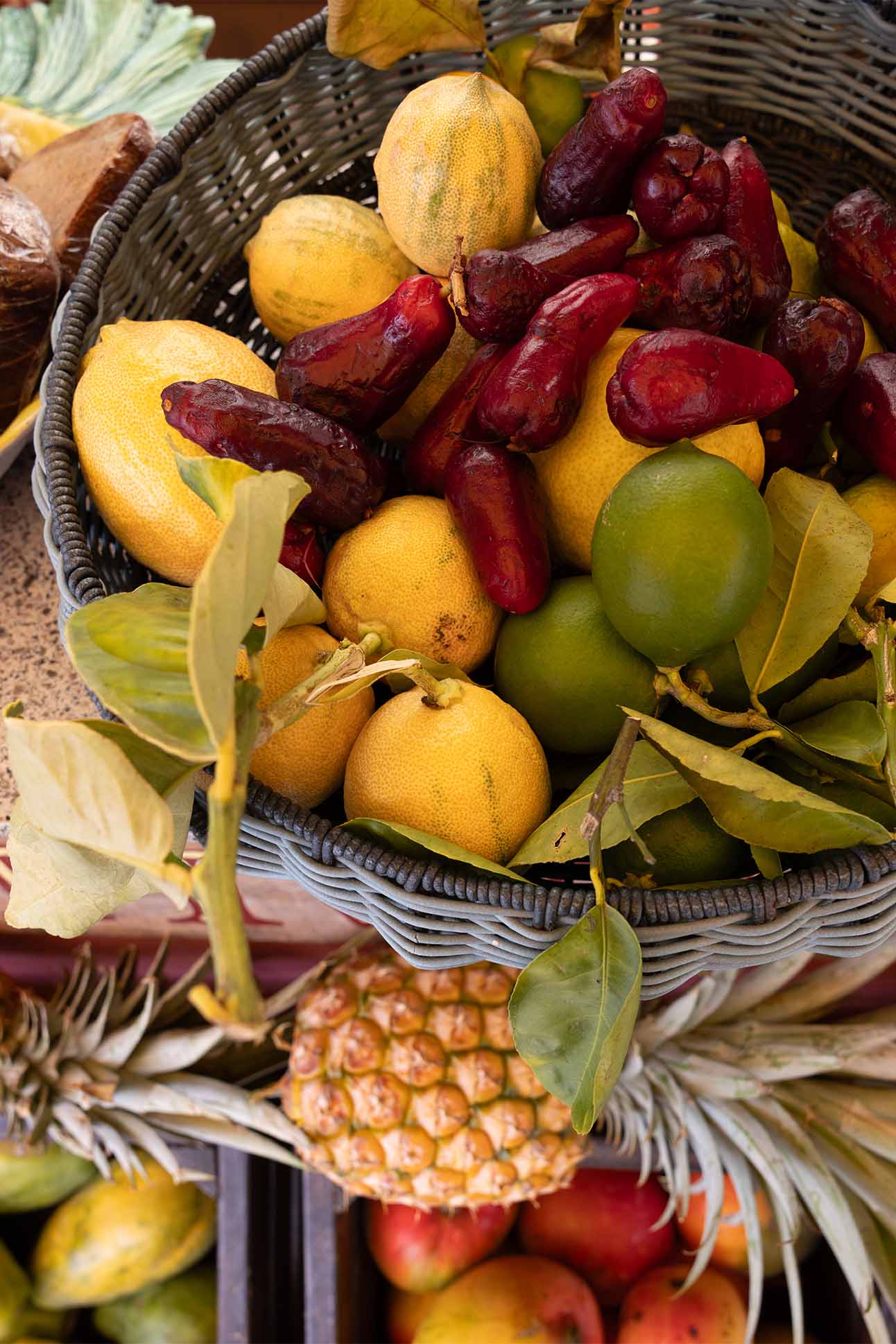
Yet, it is still possible to live in Hāmākua and not be confronted by the crowds and the tour buses. The harshness that once made this place good for little but sugarcane has kept the rest of the coast relatively untouched, held apart from the development and tourism rampant elsewhere. Here, there are no broad sand beaches to draw the casual tourist. Only the waves breaking against the craggy shoreline in a white churn that does not invite swimming. There are no all-inclusive resorts, no luxury shopping districts. Instead, one must come to Hāmākua for other reasons: to watch the light shift on the Honoka‘a cliffs, to stand on the rim of Waipi‘o Valley and look down at the taro patches in the mist, to see a Hawai‘i that is not yet a simulacrum of itself.
Thinking back on it later, there are recollections not only of the ocean and the cliffs but the moments in between: the two ladies who spent a morning talking story with you outside of Ed’s Bakery in Honomū, the calf frolicking in a pasture along Old Māmālahoa Highway, the damp smell of moss and earth as the rain came down outside of Pāpā‘ikou. These are the small markers of a coastline that resists summary, for Hāmākua does not give itself away easily. It is not for the hurried nor for the ones who need constant affirmation that they have arrived somewhere worth being. To experience Hāmākua, you must be willing to be slowed down by it: by the winding roads, by the rain, by the green that grows over everything. It is for those willing to follow the road north and see where it takes them, knowing it is less about what has been preserved and more about what persists.




